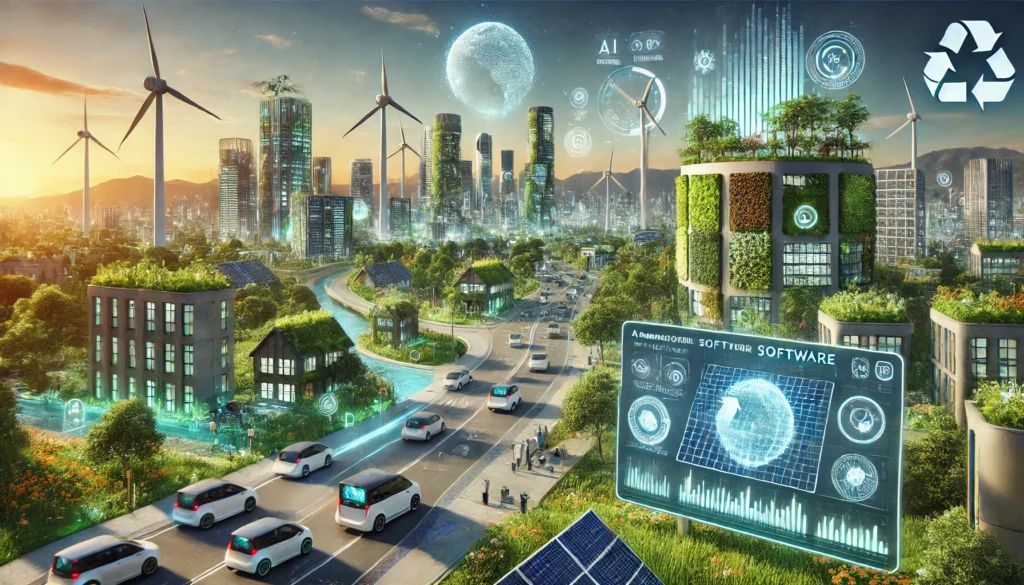Sustainable technology encompasses innovations that prioritize environmental, social, and economic sustainability, aiming to minimize ecological risks and promote resource efficiency.
Here’s a more detailed explanation:
- Definition:Sustainable technology refers to technologies created or applied with consideration for environmental, social, and economic sustainability factors.
- Examples:
- Renewable Energy: Solar PV, wind energy, and geothermal energy are examples of technologies that harness renewable resources.
- Resource Efficiency: Technologies like rainwater harvesting, carbon capture, and smart sensors help optimize resource use.
- Electric Vehicles (EVs): EVs are a sustainable alternative to traditional combustion engines.
- Sustainable IT: This focuses on reducing the environmental impact of IT infrastructure, including energy-efficient hardware and data center management.
- IoT (Internet of Things): IoT devices and software can be used to monitor, track, and optimize sustainability performance.
- Benefits:
- Reduced Environmental Impact: Sustainable technologies help mitigate environmental risks and promote resource conservation.
- Economic Benefits: Improved efficiency and resource management can lead to cost savings.
- Social Benefits: Sustainable technologies can contribute to a more equitable and just society.
- Role in Sustainable Development:Sustainable technologies play a crucial role in achieving sustainable development goals by addressing environmental, social, and economic challenges.
- Examples of Sustainable Technology Applications:
- Smart Cities: Using technology to optimize resource use, reduce pollution, and improve quality of life.
- Sustainable Agriculture: Employing precision farming techniques, vertical farming, and other technologies to increase food production while minimizing environmental impact.
- Waste Management: Implementing technologies for recycling, composting, and waste-to-energy conversion.
- Challenges:
- High Initial Costs: Some sustainable technologies may have higher upfront costs compared to conventional technologies.
- Infrastructure Requirements: Implementing sustainable technologies may require significant infrastructure investments.
- Public Awareness and Acceptance: Raising public awareness and promoting the adoption of sustainable technologies can be challenging.

Sustainable Technology: Innovations for a Greener Future
Sustainable technology refers to innovations designed to reduce environmental impact, conserve resources, and support long-term ecological balance. These technologies aim to minimize waste, lower carbon emissions, and promote energy efficiency while improving quality of life.
Key Areas of Sustainable Technology
- Renewable Energy
- Solar Power – Photovoltaic cells convert sunlight into electricity.
- Wind Energy – Turbines generate power without emissions.
- Hydropower – Uses water flow for energy generation.
- Geothermal Energy – Harvests Earth’s heat for electricity and heating.
- Energy Efficiency & Conservation
- Smart Grids – Improve energy distribution and reduce waste.
- LED Lighting – Consumes less power compared to traditional bulbs.
- High-Efficiency Appliances – Minimize energy and water use.
- Green Construction & Smart Cities
- Sustainable Building Materials – Bamboo, recycled plastics, and green concrete.
- Passive House Design – Buildings optimized for natural cooling and heating.
- Vertical Farming & Green Roofs – Reduce urban heat and improve air quality.
- Eco-Friendly Transportation
- Electric Vehicles (EVs) – Reduce reliance on fossil fuels.
- Hydrogen Fuel Cells – Produce only water as a byproduct.
- Public Transport Innovations – High-speed electric trains, shared mobility solutions.
- Waste Management & Recycling
- Circular Economy – Products designed for reuse and recyclability.
- Biodegradable Plastics – Reduce pollution from single-use plastics.
- Waste-to-Energy – Converting waste into usable power.
- Water Conservation Technologies
- Desalination – Converting seawater into drinkable water.
- Rainwater Harvesting – Collecting and storing rain for later use.
- Smart Irrigation – Optimizes water usage for agriculture.
- Sustainable Agriculture & Food Technology
- Precision Farming – Uses AI and IoT for optimized crop production.
- Lab-Grown Meat – Reduces deforestation and methane emissions.
- Composting & Biofertilizers – Enhances soil health naturally.
- Carbon Capture & Climate Engineering
- Carbon Sequestration – Capturing CO₂ from the atmosphere.
- Artificial Trees & Algae Farms – Absorb CO₂ at a higher rate than natural trees.
- Geoengineering – Techniques to cool the planet, such as cloud seeding.
Future of Sustainable Technology
The future of sustainability lies in AI-driven solutions, blockchain for energy management, and decentralized renewable energy systems. As companies and governments invest in green tech, a carbon-neutral future is becoming more achievable.

